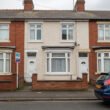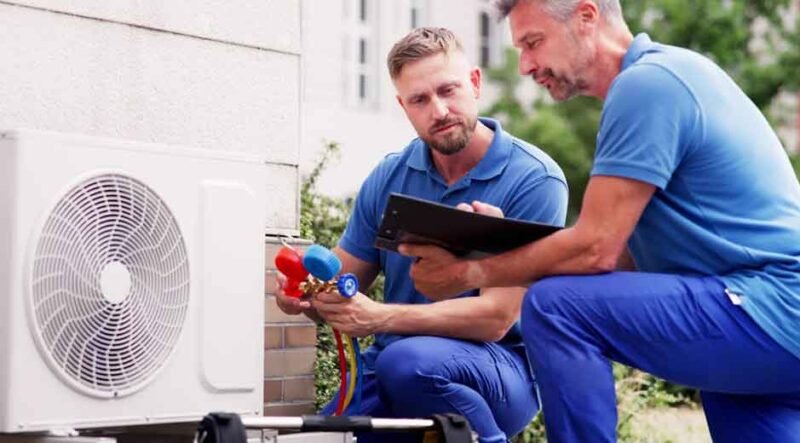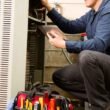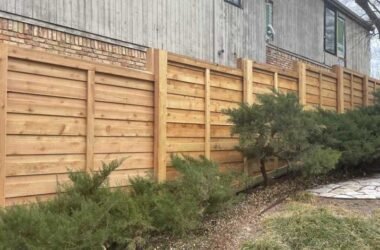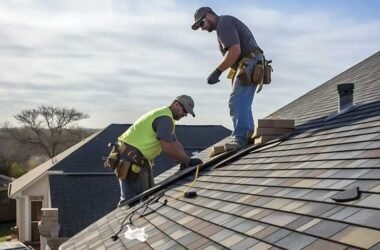Older homes often carry charm, character, and craftsmanship that newer constructions lack—but they also come with energy challenges. Many of these houses were built before central heating and cooling systems became standard, meaning the design, insulation, and ductwork aren’t continually optimized for modern HVAC performance. Improving efficiency isn’t about replacing everything at once but enhancing what’s already there to work smarter. With the right upgrades and adjustments, homeowners can enjoy better comfort, lower energy bills, and extended system longevity while maintaining the home’s original appeal.
Addressing the Foundation of Energy Loss
The first step toward improving HVAC efficiency in older homes begins with controlling energy loss. These structures often suffer from leaky windows, poor insulation, and unsealed air gaps that cause conditioned air to escape and outside air to enter. Upgrading attic and wall insulation significantly reduces the strain on heating and cooling equipment. Sealing cracks around windows, door frames, and vents further prevents unwanted drafts. Energy audits help identify problem areas using thermal imaging or blower door tests. When leaks are fixed and insulation is reinforced, the HVAC system doesn’t have to overwork to maintain indoor comfort, leading to noticeable savings on utility bills. A solid thermal envelope is the cornerstone of efficient performance, particularly in homes designed before modern energy standards were established.
Optimizing Ductwork and Airflow
A major obstacle to efficiency in older homes is the ductwork. Many older systems have undersized, leaking, or poorly routed ducts. Air traveling through these ducts can lose a significant amount of heating or cooling before reaching its destination. The solution often lies in sealing and insulating the ducts to prevent loss and maintain steady airflow. Sometimes, reconfiguring sections of ductwork can balance air distribution throughout the house. Technicians can also test static pressure to ensure the system’s fan is moving air efficiently. Consulting a reliable HVAC company such as https://www.essentialheatandac.com/service-area/auburn/ ensures that ductwork is not only inspected but also corrected to match the home’s unique layout. With restored airflow and reduced leakage, older systems can operate more efficiently, achieving closer to modern standards, thereby reducing uneven temperatures and lowering energy waste.
Upgrading to a Smart Thermostat System
Older homes can significantly benefit from the precision and convenience of modern thermostat technology. A smart thermostat learns the household’s patterns, automatically adjusting temperatures when the house is occupied or unoccupied. This dynamic control prevents energy waste and maintains comfort without constant manual changes. Unlike traditional thermostats, these systems can connect to Wi-Fi, allowing homeowners to remotely monitor and adjust temperatures. When paired with zoning systems, smart thermostats provide even more control by dividing the home into sections that receive heating or cooling based on actual need. The installation process is relatively simple and yields immediate benefits, especially when combined with an energy-efficient HVAC unit. This upgrade enhances overall system responsiveness, providing a modern touch to even the oldest homes while saving both energy and money.
Balancing Ventilation and Humidity Levels
Ventilation plays a crucial role in the overall efficiency and comfort of a home. Many older houses have limited mechanical ventilation, relying heavily on natural airflow, which can lead to inconsistent indoor air quality. Upgrading ventilation helps reduce stale air, moisture buildup, and pollutants that make HVAC systems work harder. Installing energy recovery ventilators (ERVs) or heat recovery ventilators (HRVs) can exchange indoor and outdoor air while retaining energy, thereby maintaining stable temperatures and balanced humidity. Proper humidity control also prevents mold growth and reduces the workload on both heating and cooling units. By keeping an ideal indoor environment, ventilation upgrades not only improve efficiency but also enhance the health and longevity of the HVAC system. Homeowners often notice fewer fluctuations in comfort and better indoor air quality after making this change.
Regular Maintenance and Filter Management
Even the most energy-efficient equipment cannot perform properly without regular maintenance. For older homes, routine inspections are critical to ensuring all components continue to function smoothly. Filters should be replaced or cleaned frequently to maintain proper airflow, as dirty filters cause the system to work harder and consume more energy. Technicians also check refrigerant levels, electrical connections, and system calibration to prevent minor issues from developing into costly breakdowns. Lubricating moving parts and tightening connections ensure consistent operation. Annual or semi-annual maintenance appointments are a wise investment that helps sustain efficiency and extend system lifespan. By keeping every component in top condition, older HVAC systems can continue providing reliable comfort while consuming less energy throughout the year.
Considering Partial System Upgrades
In some cases, improving efficiency in an older home doesn’t require complete system replacement. Instead, upgrading specific components such as the blower motor, condenser, or compressor can yield impressive results. Replacing outdated single-speed motors with variable-speed ones allows more precise airflow control and reduces power consumption. Similarly, upgrading refrigerants to environmentally friendly types improves cooling efficiency and lowers emissions. Combining these improvements with improved insulation and duct sealing enhances performance across the board. Homeowners can gradually modernize their HVAC systems in stages, minimizing upfront costs while achieving significant energy savings. This approach respects the home’s structure and aesthetics while aligning it with modern energy expectations.
Building Modern Comfort in Historic Walls
Enhancing HVAC efficiency in older homes is about more than energy savings—it’s about preserving comfort without compromising the home’s original character. Through insulation upgrades, ductwork optimization, smart controls, and consistent maintenance, even decades-old systems can operate like modern ones. Minor improvements accumulate, transforming drafty, uneven spaces into stable, comfortable environments. Partnering with professionals and taking a strategic, phased approach ensures that the upgrades are compatible with the home’s design and heating or cooling demands. Ultimately, an efficient HVAC system not only lowers utility bills but also strengthens the relationship between history and modern living—proving that even the oldest homes can feel fresh, balanced, and energy-smart year-round.

